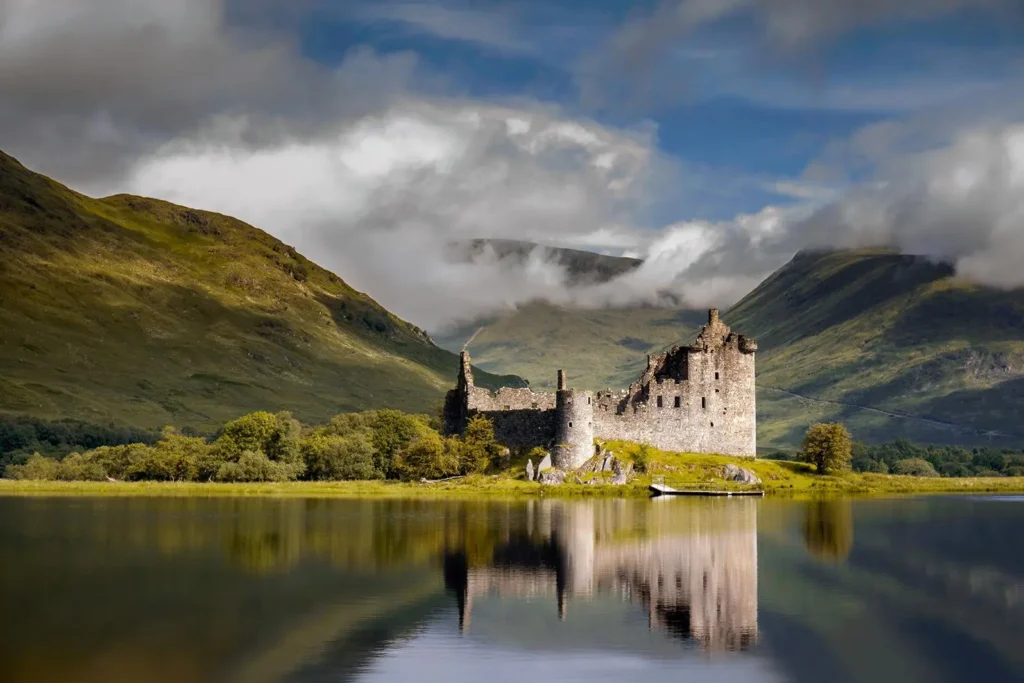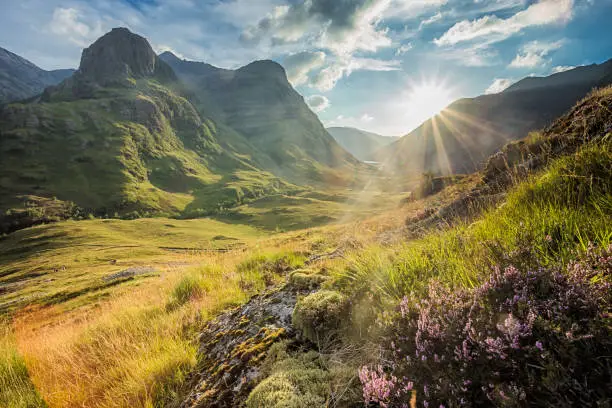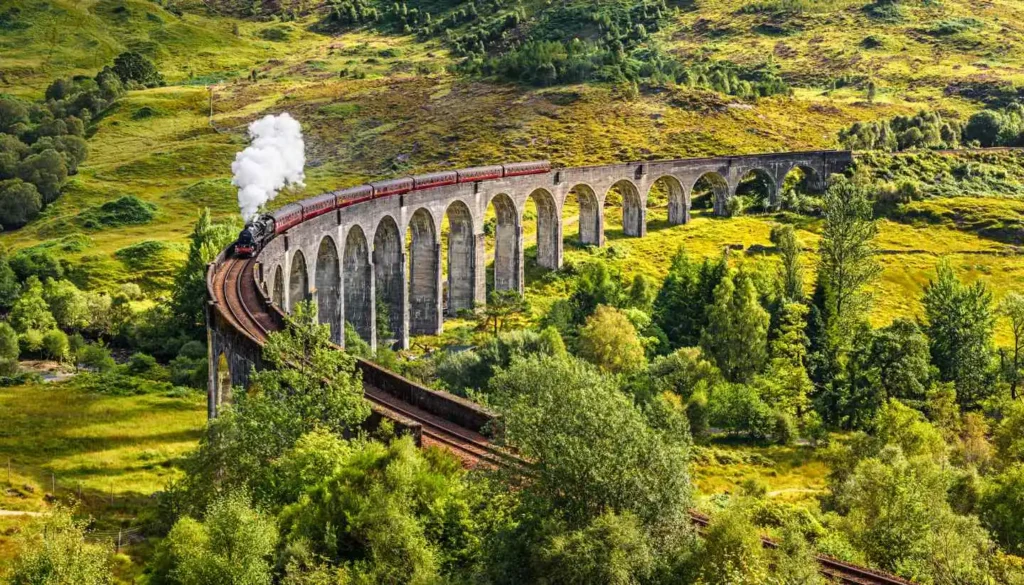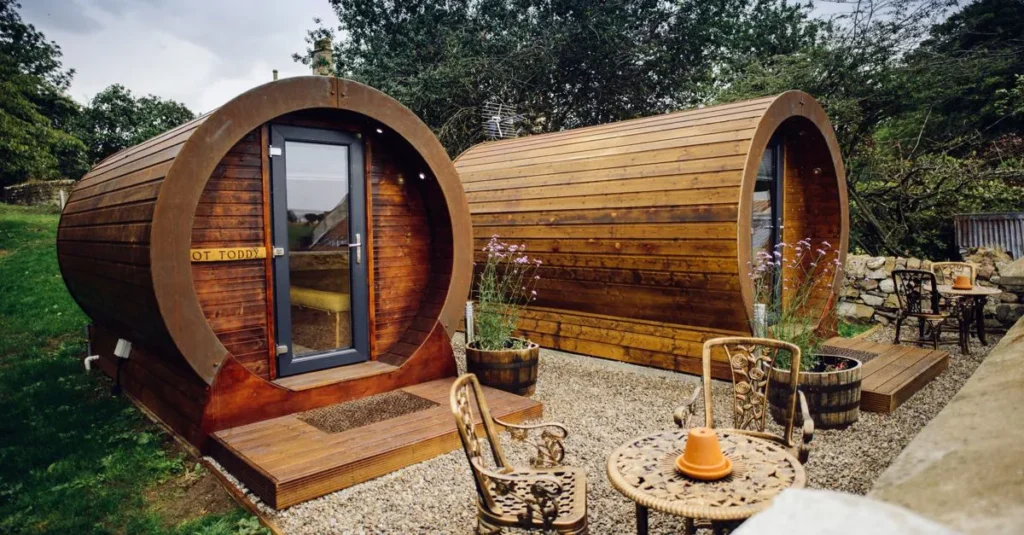The name “Scotland” perfectly captures the essence of its stunning natural beauty. Picture the rugged Highlands, which cover nearly 30% of the country, standing tall against the sky. These majestic landscapes echo the very name of Scotland. The rolling green hills and over 31,000 lochs add to the magic, each one a piece of the country’s natural puzzle. With 7,330 miles of coastline, the misty glens, and ancient forests, Scotland tells stories of a land shaped by the elements. From the heather-covered moors to the craggy shores, everything about Scotland feels like a journey into nature’s own masterpiece.
Now that you’ve decided to embark on an adventure to this mystical land filled with ancient stories, let me be your guide. Scotland might seem like a small speck, often overshadowed by the UK and Ireland on either side, but it’s a place of its own, rich with history and beauty. To truly appreciate it, you’ll need a bit of planning. But don’t worry, this guide is going to answer your question on how to plan a trip to Scotland in a way easier than you thought. So, let’s dive into the wonders of Scotland together and make the most of your journey!

When is the best time to visit Scotland?
Would you trust me if I told you there’s no perfect time to visit Scotland, only moments that shine brighter? The weather here is famously unpredictable! rust me on this, I’m writing this in June, and you’d think, “Oh, it’s summer, the sun must be out.” But here I am, watching the clouds play hide and seek with the sun. Every season in Scotland has its own unique charm, from the lush greens of spring to the endless days of summer, the vibrant hues of autumn, and the snowy landscapes of winter. The weather may surprise you, but each season promises its own magic.
Ah, Scotland in summer it’s a time of pure enchantment. The countryside bursts into a kaleidoscope of wildflowers and lush greens, painting a picture-perfect backdrop for outdoor adventures. Personally, I’m drawn to the stretch from summer to fall. Those months bring long, sun-kissed days that are ideal for my favourite pastime hiking. Trust me, hiking in Scotland is an absolute delight you shouldn’t miss. The extended daylight hours of summer give me the freedom to wander and discover new trails, each offering stunning views and a sense of adventure.
And let’s not forget about the festivals! Summer in Scotland means bustling cities, especially Edinburgh, where the world-famous Fringe Festival and Military Tattoo set the stage for vibrant cultural experiences. Whether you’re hiking through tranquil landscapes or soaking up the lively festival atmosphere, Scotland in summer promises memories that will last a lifetime.
Spring brings Scotland to life with nature awakening and fewer tourists, ideal for serene explorations. For skiing enthusiasts, December to April sees the opening of Scotland’s ski resorts, contingent upon snowfall.
Scotland’s diverse landscapes beckon exploration, inviting you to wander through lush valleys or conquer rugged summits. Whether you’re captivated by wildlife encounters, immersed in cultural festivities, or seeking outdoor adventures, Scotland’s seasons promise unforgettable journeys tailored to satisfy every traveller’s passion and curiosity.

How much time to spend in Scotland?
Personally, if you were to ask me, Scotland is a place I could happily spend a lifetime exploring. Its scenic vistas and enduring beauty never fail to captivate, no matter how many times you visit. But let’s get straight to the point and share some practical advice:
When it comes to how much time to spend in Scotland, the answer is straightforward: as much as possible. While it might be tempting to rush through on a whirlwind tour, trying to squeeze in Edinburgh, Loch Ness, the Isle of Skye, and Glencoe over a weekend won’t do justice to Scotland’s allure. Would it be enjoyable? Probably not…
To truly soak in the essence of Scotland, aim for at least a week or ideally up to 10 days. This gives you ample time to delve into Edinburgh’s rich history, soak up the cultural vibe in Glasgow, and easily venture into the captivating Highlands. From there, whether you’re exploring rugged mountains, serene islands, or hidden gems like the northeast coast and southern landscapes, each region offers its own unique charm.
If your time is limited, it’s best to adjust your plans and prioritize quality experiences. I’ve discovered firsthand that rushing through Scotland in just a few days leads to more time on the road than actually enjoying the sights.
In the end, whether you have a week or a few days, Scotland promises unforgettable moments that deserve to be savored at a leisurely pace.
How to travel around Scotland?
Exploring Scotland by car is a dream for camping enthusiasts and road trip aficionados like myself. The freedom to roam and explore at your own pace is unparalleled. However, I understand it’s not always feasible for everyone, given various considerations. Not to worry Scotland’s public transport system ensures you won’t miss out on the adventure, only requires a bit more planning.
From personal experience, I once embarked on an epic journey to the Isle of Skye that spanned more than a day: a train, a ferry, two buses, and finally hitchhiking to hike the Quiraing. Each leg of the journey offered its own unique charm and beauty, making it an unforgettable adventure.
Now, onto public transport options: Major airports like Edinburgh, Glasgow, Aberdeen, and Inverness offer convenient flights across the country, often under an hour. If driving isn’t your preference, Scotland’s well-maintained roads and motorways make for smooth journeys between cities, while scenic routes unveil breathtaking vistas.
Trains traverse from Edinburgh and Glasgow through the Highlands to Thurso and Wick, offering stunning views along the way. ScotRail provides comfortable travel with options for 1st class and advance ticket savings. For budget-conscious travelers, Scottish Citylink buses crisscross the country, albeit taking a bit longer.
Opting for a ferry adds a scenic touch, with Caledonian MacBrayne serving the Western Isles and Northlink Ferries connecting to Orkney and Shetland. Whether by road, rail, or sea, Scotland’s diverse transportation options ensure your journey is as memorable as your destination.

How much do tourists spend in Scotland?
When you arrive in Scotland, having both cash and cards is your key to convenience. Picture exploring Edinburgh’s historic streets or hiking the misty Highlands, with ATMs conveniently scattered for pub lunches or souvenirs. While credit cards are widely accepted, local shops and cozy B&Bs often prefer cash, adding a charming touch of tradition to your modern Scottish adventure.
Planning your expenses in Scotland is a journey in itself—it all hinges on how you envision your adventure. Whether you’re crafting a thrifty escapade or treating yourself to luxury, your budget will sculpt your experience. Here are some key elements to consider:
- Accommodation: From cozy hostels at £20-£40 per night to lavish stays surpassing £150, Scotland offers a range of choices to suit every traveler.
- Culinary Delights: Savor local flavors with meals ranging from £10-£20 at casual eateries to indulgent dining experiences costing £25-£50 per person.
- Getting Around: Navigate Scotland affordably with local buses at £2-£3 per trip or embark on road trips starting at £20-£40 per day, plus fuel.
- Adventures Await: While some attractions offer free entry, plan for £10-£50 for enriching tours and activities to enhance your journey.
Plan ahead and budget around £50-£100 per day for incidental expenses. By preparing financially, you can enjoy Scotland to the fullest, regardless of your budget.
Where to stay in Scotland?
When it comes to finding a place to stay in Scotland, the options are as diverse as the landscapes:
- Luxury Hotels & Resorts: Indulge in Scotland’s top-tier accommodations, where impeccable service meets stunning locations and breathtaking views, ensuring a stay that feels truly special.
- Hotels/Apartments: From well-known chains to boutique finds, hotels and apartments offer reliability and comfort, with apartments providing extra space and the freedom to cook your own meals, perfect for longer stays.
- B&Bs/Pensions: Discover the warmth of Scottish hospitality in cozy B&Bs and pensions dotted across cities, towns, and rural hideaways. Expect comfy lodgings and delicious homemade breakfasts that start your day right.
- Camping/Cabins: Embrace Scotland’s outdoor spirit with campsites offering tent spots and rustic cabins, perfect for those seeking budget-friendly adventures in nature.
- Hostels: Whether in bustling cities or quaint regions, hostels provide a lively atmosphere and a chance to connect with fellow travelers, making them ideal for the social explorer.
Personally, I have a soft spot for Airbnbs. They often offer a more personal touch, and being surrounded by Scotland’s beauty adds to the experience. Once, I stayed in an Airbnb themed around films—a haven for cinephiles. The hosts, true film enthusiasts, had transformed their place into a mini movie theater with soundproofing and an extensive movie collection. It was a unique experience that added a touch of magic to my travels. Scots are known for their friendly banter, making every stay memorable, whether you’re exploring the cities or venturing into the Highlands.

Where to eat in Scotland?
Scotland boasts a diverse array of dining options to suit every palate and budget, mirroring its lively multicultural community. Whether you’re seeking traditional Scottish food or international cuisine, the options are plentiful across the country.
For those watching their pennies, supermarkets and local markets are ideal for picking up snacks, picnic essentials, or ingredients for a home-cooked meal if you’re staying in self-catering accommodation. Fast food chains are conveniently located in major cities and along highways, while street food vendors offer quick and tasty treats favored by locals.
Cafes are a ubiquitous sight, perfect for grabbing a coffee, delicious pastries, or a satisfying sandwich whether you’re dining in or taking away. Edinburgh and Glasgow are especially rich in independent restaurants offering diverse menus to satisfy every palate. Whether you prefer the familiarity of chain restaurants or the charm of independent eateries, there’s something to suit everyone.
For those seeking a more upscale dining experience, Scotland boasts some of the world’s finest restaurants, ensuring memorable fine dining experiences. Personally, as a Glasgow resident, I highly recommend Ardnamuchan for anyone visiting Glasgow or including it in their Scottish itinerary. It’s my personal favorite for experiencing authentic Scottish cuisine at its best.
Whether you’re indulging in local favorites or sampling international dishes, Scotland promises a delightful culinary adventure that caters to all tastes and preferences.
Conclusion
As we come to the end of this guide, Scotland’s beauty and allure are waiting to be explored. Whether you’re captivated by its ancient castles, enchanted by its natural wonders, or indulging in its diverse cuisine, Scotland offers something special for every traveler. Embrace the adventure, immerse yourself in the culture, and let Scotland leave its mark on your heart. Safe travels!